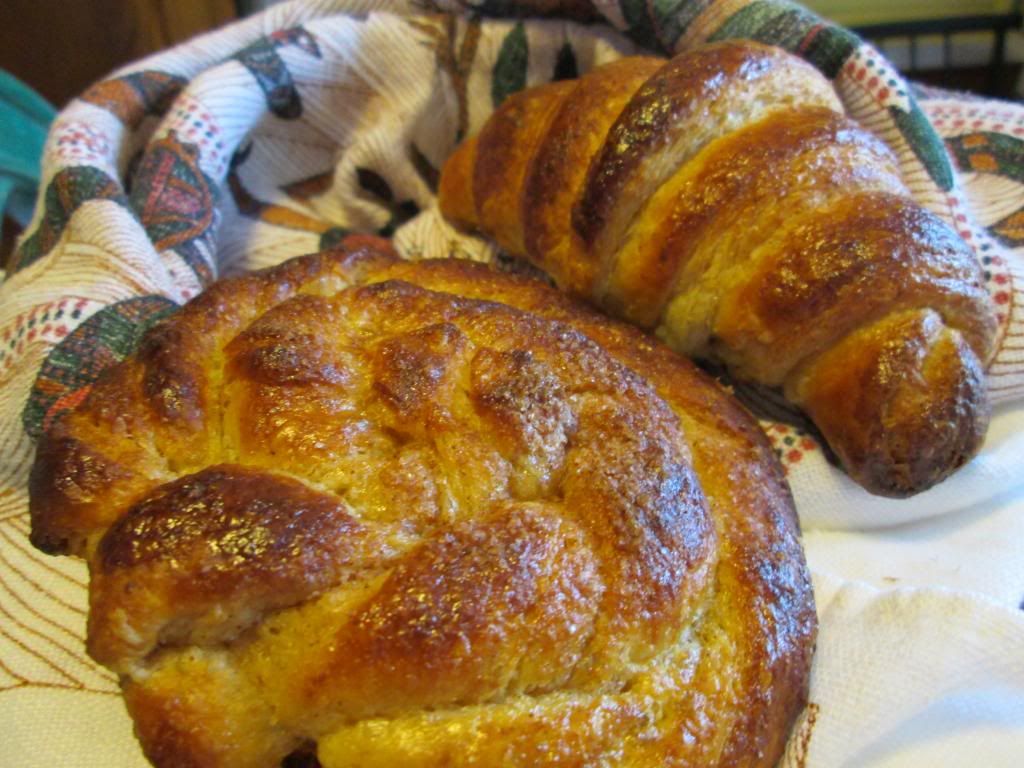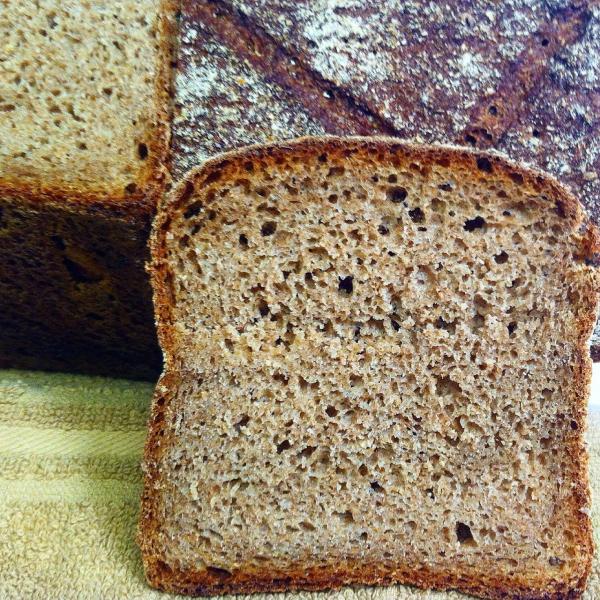I know, I know! I haven't posted for over 8 months. I could say I've been very busy, which is true, but isn't everybody? So, I have little in the way of excuses. As you are about to read, however, I have recently moved into a proper unit and set up a bakery, so, any posts would really be about out-and-out commercial production, and that is really beyond what this great website seeks to offer.
A quick catch-up. In September we attended the Alnwick Food Festival again http://www.alnwickfoodfestival.co.uk/whats-on-in-2013/saturday-22nd-september , where my colleague Ann Cudworth http://www.doughworks.co.uk/ and I demonstrated plaiting of a six-strand plait as an opener to the cookery demonstrations at the Food Festival. Some of you may remember that Codruta came over to work with me for the Powburn Show event in August 2012 http://www.thefreshloaf.com/node/29875/baking-powburn-show-2012-my-account-codrutas-visit For this event I had another visitor from Romania with similar aspirations to open a bakery. I am not sure whether Adrian Serban is still posting on TFL, but he was a very welcome guest and apprentice for a week in September.
After the hard graft of the food festival, I attended a couple of days at a Cheese Festival held at the National Trust's Cragside House in October. It is a lovely venue although there was a bit of a lack of cheese vendors there on the days I attended, so trade was pretty quiet.
I have continued to attend Farmers' Markets at Hexham twice a month with Nigel, and at Alnwick every month, plus slightly more sporadic attendance at Newcastle Farmers' Market. You can see the schedule upcoming on my website here: http://www.breadandroses.co.uk/calendar/ Hexham continues to improve for me, whilst the Alnwick Farmers' Market continues to under-perform and many of us traders have either ceased attending, or seriously lowered our expectations. Disappointment is a word I try to avoid using, but in this case, it is hard to think of a better word to describe my feelings about this. Christmas markets at Newcastle, and particularly Hexham, were packed events with great sales achieved.
In the new year I did a few bits of teaching, attended an exciting event in Morpeth to promote the business at "Meet the Maker, Meet the Buyer" event sponsored by the County Council. After that Alison took me to the Lake District for a lovely birthday retreat for a couple of nights during February half term. After that, everything changed!
Our longer term plan to site a bakery at Hedgeley Services in our village of Powburn fell through when the business owner had to face up to a bill of £30,000 in order to upgrade the electricity to accommodate my electric deck oven...more on this in a bit! So, just after that bombshell, news came through that the country house where all my baking equipment was in store had been sold and we had to move the kit fast! So, rather than spend money moving it and storing it, we decided to go into production immediately...well, once Alison and I returned from our holiday to Crete at Easter. So we rented an industrial unit in Alnwick from late in March. You can see a few pictures here of how we began to kit it out.
I have been carefully sourcing equipment for some time now, with the seriously limited financial resources available. I managed to buy a 2-deck electric oven, Tom Chandley's ever-reliable Compacta, along with a good steel table and a large double sink unit complete with hand-wash basin, from a colleague I used to teach in Leeds, who is now a bakery manager for a very successful company who have just expanded north from Yorkshire to Durham. The oven is fantastic, and is producing far superior bread to that I could make on the wood-fired oven at home which was so under-capacity for the typical quantity of bread I was always hoping to bake. More thoughts on this to follow. This is the oven:
To the side of the oven. the white painted door hides a proofing area. There is no steam facility with the oven, although I could no doubt fit this if I had some money! I am using a steam-cleaning machine a bit like this: http://equip2clean.co.uk/media/catalog/product/cache/2/image/9df78eab33525d08d6e5fb8d27136e95/s/k/skyvap-max.jpg
I bought a rack and 16 baking sheets, some more steel tables and most recently, a manual pastry brake made by John Hunt some time ago now. The Hobart 20 quart sits on one side of the weighing station, and a very neat spiral mixer from Fimar is on the other side, next to the oven:
I believe this is the 32L model, designed to mix up to 25kg of dough at a time. At this point I will just take a bit of time out to try to address a question raised by Janet Cook and Varda in a post on TFL not too long ago: http://www.thefreshloaf.com/node/38328/my-new-favorite-bread-and-other-matters#comments Janet's question is the 16th comment in the thread.
Ok, so I bought this mixer for £250 cash. It has been used, but it is immaculate, and the full price machine is well over £800 plus the dreaded VAT, and any costs incurred in shipping. So, I got a bargain. My personal preference for spiral mixers are those with dual speed, and with a bowl rotation facility allowing you to switch from clockwise to anti-clockwise. An "inch" button which allows you to move the bowl round very slowly to enable cleaning is also useful to say the least. For really small dough sizes, allowing the spiral to work without the bowl rotating is extra useful. Usually this is on the same switch which enables rotating direction to flip one way or the other. Of course, a detachable bowl is fabulous, but uncommon in the UK, except on machines which mix capacities in excess of 100kg of dough at a time. I don't think it is quite so rare in continental Europe to find small models with this facility. So, my machine has NONE of these features, alas! It rotates at 90rpm in a clockwise direction. You cannot move the bowl or the spiral hook round in any other way; manually or with power! BUT, it is a big but; it is built in Italy to high specifications. So it's not going to breakdown in a hurry, touch wood. Also, most of the doughs I am mixing are quite suited to long and gentle development, especially the Gilchesters flours which are wholly unsuited to second speed intensive mixing on the spiral. The machine mixes the soft white dough, the weak Gilchesters' Farmhouse, and the somewhat more difficult Five Grain and Seeded Sourdough batches. A good scraping down early on is all that is required. I have even managed to use it to mix my 100% rye paste....which is just great, because the 12-15kg batch size I make these days is just too much to fit in the 20 quart Hobart with the paddle. So, I am just getting by with the best that I could afford at the time. It's very noisy, but only because it is standing on a "job-stand" rather than a proper table, and it tends to vibrate as a result. Ok, that should cover the ground, I hope.
I also bought a 2-door Foster Retarder, which is fabulous. It has capacity for 40 trays of product. I tend to use half for raw product, and the other side is filled with containers of dough, retarded overnight so I can work it off as soon as I arrive for work! These cost around £2500 re-conditioned here in the UK; we paid a lot less than that, even allowing for expensive transportation from Northampton to Northumberland.
Alison and I were joined in Crete this year by her son Daniel and his girlfriend Grace. We spent a few days in the heat in Chania, where I seemed capable of doing little except sleep, on account of having worked so hard before going away on holiday. We went on to Anatolika, where we stayed last Easter, and in 2010 when I made this post: http://www.thefreshloaf.com/node/19167/anotolika-beach-house Once back in the UK it has been a non-stop business rollercoaster, of course. I just don't have time to post about this sort of thing, I am very sorry. I know some of you will be very interested in this, and you are welcome to keep in contact with messaging on TFL, or on my website or through Twitter. And, anyway, all my baking now goes beyond the scope of what Floyd set the website up for. I have often felt my posts here strayed away from the purpose of the site, but am grateful for Floyd for generously allowing me to post, and to all of you who have commented so positively over the years.
I will still be about, but am unlikely to be able to post on any regular basis. But, it's not hard to keep up with what I am doing here in the North of England. The downside to the new bakery: I have a 20 minute car journey at some horrible hour to get to work, and I have to pay out a lot of money in rent every month for the premises. Everything else is a positive. We have regained our kitchen! I cannot believe how big it is now I have taken all the bakery kit out! I don't have to go outside in the rain and suffer abuse from my neighbour for chopping wood and firing the oven! I don't have to bake on an oven of massive under-capacity. I really like the deck oven; product quality has improved massively. Some may be surprised to read this; others may even think the deck oven does not produce really authentic traditional bread. Well, the heat is retained in the ceramic bottom of the oven and there is a degree of radiated heat from all round, especially given there is a separate setting for top heat. The breads bake directly on the heat source, and I set each one carefully with the peel. So, there it is; no more hard work deal with logs and getting dirty firing the oven. No down-time firing and settling the oven before you can start baking. One hour to get the oven hot, and that's it...away you go. One important point here, however. Deck ovens operate at 32 amps per deck; they are expensive to run, where wood can be much cheaper if you have a good source, and your oven burns efficiently.
To close, here's a few photographs of the bakery as it is now; not quite finished, but approved by the Food Hygiene people, and we are up and operating, and have been for around a month now.
Very best wishes to you all, and, Happy Baking!
Andy




















